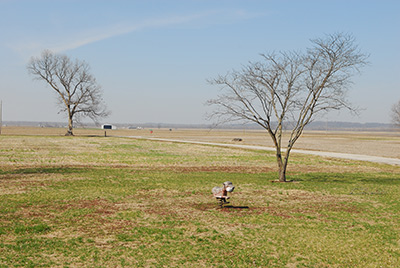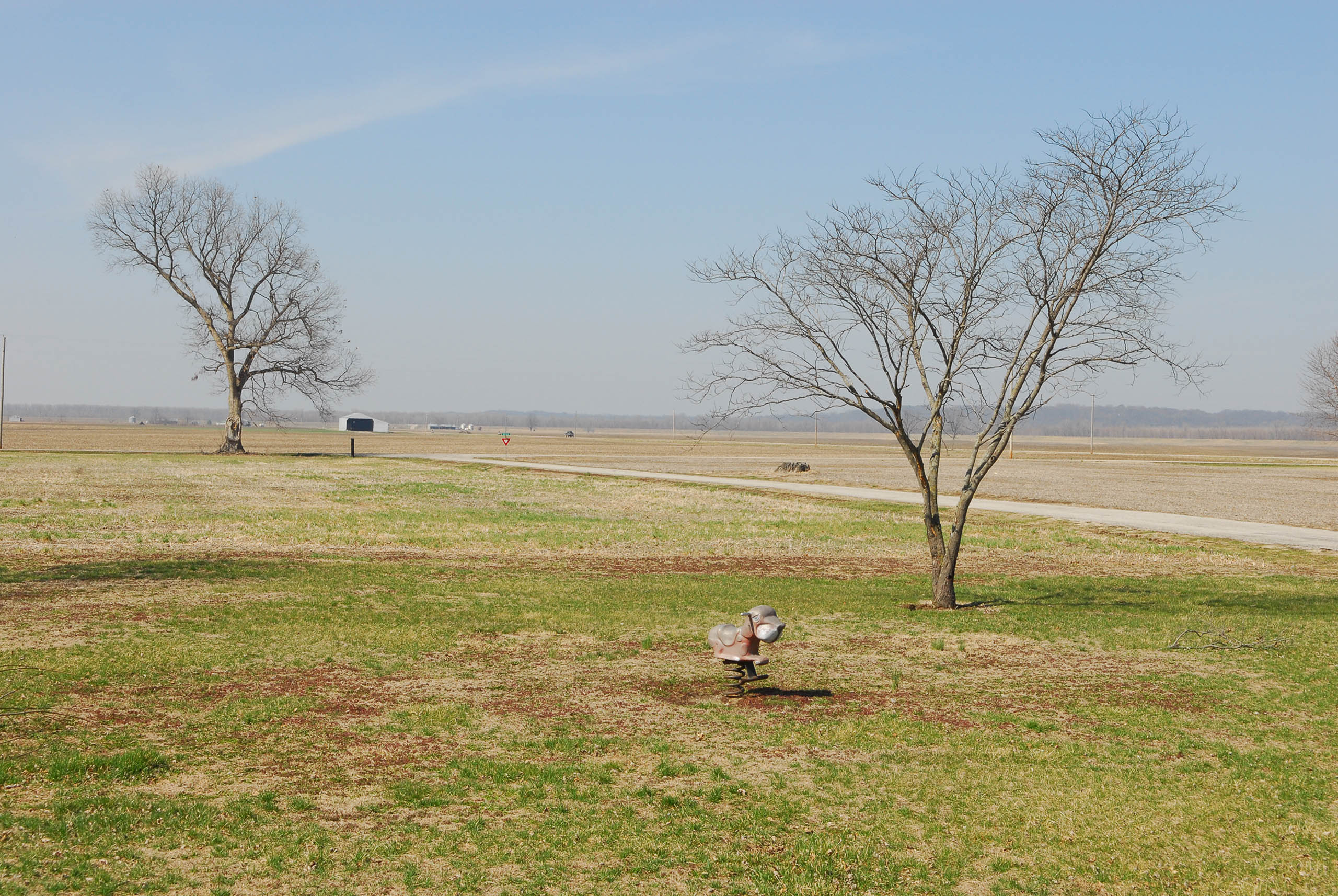



Kaskaskia is the only community in Illinois west of the Mississippi. This now small, unassuming village was once dubbed the “metropolis of the Mississippi Valley”—a bustling center for Illinois trade during the French colonial era—and was later the capital of Illinois Territory in 1779—to become briefly, in 1818, the first capital of the newly-constituted State of Illinois. The history of Kaskaskia is one of shifting political and natural alliances: its story involves a founding by renowned French explorers Louis Joliet and Jacques Marquette (1690s), adamant anti-British out-migration during the French and Indian War (1763), a resounding welcome to Revolutionary War troops (1778), and a complex series of erasures and reconstructions due to the volatile and ever-changing course of the Mississippi River (1785, substantially flooded; 1844, inundated up to seven feet; 1881, finally washed away).
To get to this once-capital city, one must now enter from the Missouri side of the river. Crossing an elevated causeway from the small but active town of St. Mary, Missouri, one passes through the wide and wild expanse of a swampy slough that was once the main channel of the river when it meandered west of town. Beyond the levee, this wide, empty, and particularly flat quasi-island carries the traces of its once-royal founding in local road names like Kings Highway, La Grande Rue, and, more prosaically, Common Field Road.
There are few structures left to distract from the central cluster of brick buildings in what was once the center of town. The still-active Mission of the Immaculate Conception Catholic Church doubles as the local (and excellent) historical society/museum, but the real treasure is housed in a small, gazebo-like structure next door. In 1741, King Louis XV of France gave as a gift to the church and residents of Kaskaskia a large brass bell inscribed on one side with the words “POUR L’EGLISE DES ILLINOIS PAR LES SOINS DU ROI D’OUTRE L’EAU (For the Church of the Illinois, by gift of the King across the water) and on the other with royal lilies of France and the now-iconic fleur-de-lis. The bell was shipped from France (where it was cast in La Rochelle) to New Orleans, then brought up the Mississippi on a flat-bottomed boat, arriving Kaskaskia in 1743. Originally housed in the church belfry, the bell was rung by villagers to celebrate their July 4, 1778, liberation from the British—a common practice for the ensuing 200 years. For this and other reasons, the bell is commonly known as “The Liberty Bell of the West.” Now housed in an open-air structure, the bell is no longer rung owing to a growing crack in its side caused by numerous topplings in flood events over the centuries. And while guests are no longer allowed to touch the bell, a small button at the barred entry of the gazebo triggers a curious audio program of the bell’s history.
On the return to St. Mary, consider taking Cemetery Lane, which takes one past starkly abandoned playgrounds, houses braced for the next flood defiantly built atop tall stilts, and ultimately, a localized high point of gravestones and the ubiquitous cedar trees of rural cemeteries.
Intangible Heritage on the American Bottom